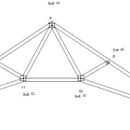Roof sheathing – TechShield versus Zip System
We are building a 1,600 sq. ft. addition; it is being added to a 1930’s farmhouse in the Richmond, VA area (Zone 4, mixed humid). Detail summary: walls are 6 1/2″ SIPs, truss roof (see attached file) with partial cathedral ceilings (1 ft. extra heal height for insulation), roof insulation planned is blown-in cellulose (vented attic), conditioned crawl with 2″ thermax at interior foundation walls, etc.
We are in the process of deciding on the roof sheathing. The roofing material will include Energy Star rated shingles. My question concerns the roof sheathing. One of our contractors uses Techshield; another I’m considering is the Zip System roof sheathing. Any thoughts on which way to go?
GBA Detail Library
A collection of one thousand construction details organized by climate and house part










Replies
Greg,
TechShield is a radiant-barrier sheathing. In my opinion, it only makes sense in homes that have ductwork or HVAC equipment in a vented, uninsulated attic. And a new home shouldn't have any ductwork or HVAC equipment in a vented, uninsulated attic.
In other words, radiant barrier roof sheathing is a half-measure that attempts to mitigate the bad effects of a fundamental design error.
So if you don't commit the design error, you won't need the half-measure attempting to lessen the effects of your mistake.
More information here: Radiant Barriers: A Solution in Search of a Problem.
Thanks Martin - I agree. It is much smarter to run the HVAC in conditioned space for new construction - better design and the most cost-effective solution for new construction.
Unfortunately, our existing HVAC is in a "vented attic" - 1930's portion of the home. We'll be running duct work from that system to the new Addition's upstairs (a master bedroom and bath). We'll do our best to insulate the ducts, especially in the new addition portion, but it doesn't appear to make much sense to replace the existing HVAC upstairs (ROI and budgets).
We have installed Mitsubishi minisplits downstairs (existing 1930's portion of the home) and we'll be installing minisplits in the addition "downstairs."
It sounds like the techshield would help out in our situation for the vented attic given the new/old situation in the attic?
I think I now have a better understanding of the flaw; the new addition duct work is "designed" to be in "un-conditioned" space (not smart). The smartest thing to do appears to be running the ducts to the new addition within conditioned space and somehow improving or conditioning the attic space that includes the existing HVAC system in the older portion of the home.
I'm definitely not sold on radiant barriers; they appear to be a band-aid approach to the real issue as pointed out in the radiant barrier article. Again, thanks for the reply.